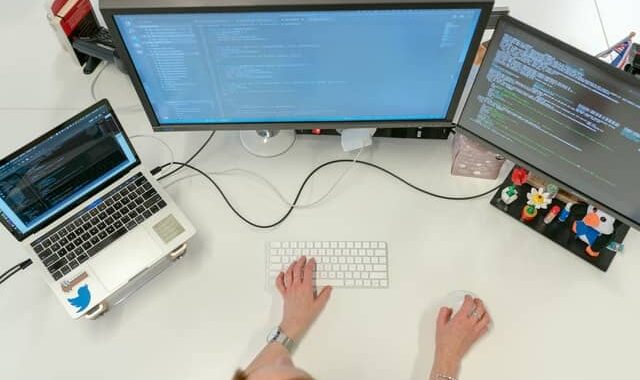-640x380.jpg)
The human resource department plays a key role in the success of a company and its long-term goals. The employees of a company have the ability to create a welcoming work culture, change the organizational structure as needed and drive the company’s success. Therefore, it’s not surprising that HR functions are extremely important. Human resource management has several processes that include recruiting employees, training, retaining talent, and much more. Simply put, HR functions include managing the employee life cycle from start to finish. They also have to keep on board with employee benefits and well-being to ensure that they are motivated and satisfied.
Related articles:
CORE HR: Key tool for harmonizing HR processes
Which KPIs to Optimize for HR Management?
HR Functions to Optimize
It’s crucial to optimize key HR functions because they can help the human resources department enhance its effectiveness. This is important because the HR department is a key driver in achieving business success and organizational goals. You may be wondering, what exactly are the main HR functions a company should optimize? Although all functions are important, we will discuss a few major ones today:
- Talent Recruitment: It’s important to emphasize the importance of this function because the people that you hire, help your business objectives. The HR function plays an important role in talent recruitment because they oversee the whole process therefore they need to have a good recruiting strategy that will help the future of the business.
- Performance Management: When we want to see how the company is doing in terms of quantity and quality of the work being done, performance management is a key factor to consider. It helps keep track of your employees work and any future problems that may arise.
- Training & Development: Hiring qualified and motivated employees isn’t the only responsibility of the HR department. It’s crucial to keep developing the skills of your employees to keep up with changes in the workplace. This is done through employee training programs, professional development programs, or various different workshops that will allow them to prosper and build skills that align with your organization’s goals. This will also help employee retention because they will feel more comfortable and satisfied with such programs.
- Compliance with Labor laws: It’s important to ensure that your HR management follows the labor and employment laws. If laws are not followed this may result in employee dissatisfaction, lack of employee productivity, and poor working conditions which all affect employee performance and business objectives.
- Taking Care of Employee Satisfaction: The HR department has to make sure that the employees are happy and satisfied in their workplace. There are many aspects that contribute to employee satisfaction which include employee-employer relations, having a positive employee culture, creating a safe work environment, and having good employee benefits.
Talent Acquisition
Talent acquisition is a critical aspect of the HR department. Finding employees that have the right skills, motivation, and match your company culture are all key factors to look out for. HR managers can utilize many techniques to optimize talent recruitment and they should also look towards HR analytics to enhance this process. HR analytics can be used during the employee life cycle, especially recruitment, where data can be collected and analyzed at different points.
How to Optimize Talent Acquisition
How do you optimize talent acquisition as an HR manager? The first step to improve your talent acquisition process is to have a clear goal in mind of what type of employee you are searching for and how they will align with your business objective. Think about the future business goals and find talent that will be able to grow and scale accordingly, rather than just filling a spot. To optimize your search for top talent, data is key during this business process because it can help you figure out where your company is getting its top talent from and you can then focus on certain key areas, colleges, and academic programs that you want to hire from. Lastly, the interview process should be done to the best of one’s ability. While you’re interviewing candidates, make sure to change the process according to their position. For example, if they’re going to be working in a technical role, make sure to include such questions or if they’re going to be doing a lot of group work, have a group interview as a part of the process. Overall, make sure to reflect your company’s objectives and culture during the recruitment process to ensure you find the best talent.
Performance Management
Performance management is extremely important for the HR department because it helps your company operate efficiently. By implementing the correct HR systems to track performance, you will be able to measure your metrics and targets and how well your employees are performing to achieve them. Performance management requires HR professionals in the department to articulate clearly with transparency what the goals and targets are.
How to Optimize Performance Management
Companies are constantly evolving and immersing within the technology field, which means that new and improved HR strategies are needed to keep up with employee performance. The first way to optimize performance management is to keep your HR software updated, which will help you accurately track your employees’ work, business objectives, and how well they’re being followed. Further, put emphasis on performance reviews rather than just handing out the yearly reviews because it’s a task. Ask managers to have real conversations with the employees, guide them through their questions, and manage not only based on numbers but also on qualitative information you get from your employees.
Training and Development
With the constant changes in technology and potential changes in your organization, it’s important to upgrade your employee skills and values. Providing training opportunities and a chance to learn new skills or optimize their current skill set is critical for the workforce and their growth. Organizations often require employees to have technical skills, analytical skills, creativity, and much more but it’s important for HR executives to realize that to retain such employees, a good training program is required. Make sure that you have a human resources training program in place for the training development of both new hires and the existing workforce.
How to Optimize Training and Development
The first step to optimizing training and development is to personalize your HR strategy rather than using a one size fits all approach. Different employees require different training due to the personal skills that they utilize in your organization. To ensure optimal employee development, deploy personalized training programs. Although this may be a lot more work, it will help bring a motivating culture to the organization and will improve employee satisfaction. Further, create training programs to also align with management goals such as productivity, improve sales, better performance, etc. This way, the employees will learn skills that will contribute towards those goals, which will improve organizational development. Lastly, it’s important to set realistic budget expectations and have a clear goal in mind regarding the purpose of the programs that will be delivered. For example, you can work with the finance department to ensure you get the right numbers and budget accurately.
Compliance with Labor Law
The human resources management department has to contribute to the company by creating a culture of integrity and honesty. It’s critical to run the business in an ethical manner and comply with labor laws. This includes having a fair onboarding process, good working conditions, an appropriate interview process, fair policies and so much more.
How to Optimize Labor Law Compliance
As an HR professional, how do you optimize labor law compliance at your organization? The first step is to document all of your company policies in a timely and accurate manner. This can help make workforce management easier and can give employees a clear view of all policies including pay, vacations, filing complaints, and so much more. Keeping up with changes in regulations depending on your location of operation is a part of HR responsibilities. This includes regularly checking government websites, press releases, checking employee standards, etc. Lastly, always have clear communication with your employees. HR professionals and even others in the organization should always promote ethical behavior, watch out for employee concerns on any complaints, wage concerns, and more.
Taking Care of Employee Satisfaction
Employee satisfaction isn’t only about keeping employees happy, it’s much more than that. Employee satisfaction includes keeping employees motivated, having healthy employee relations, and them being happy with their work and committed to the organization. Having satisfied employees results in an increase in workplace productivity, a decrease in absenteeism, and improved profits.
How to Optimize Employee Satisfaction
It’s important to ensure your employees are receiving accurate compensation and benefits for their skillset and contribution to their role at the organization. It’s easy for employees to do research about workers compensation and see where you stand on salary ranges versus your competitors. Be creative with your compensation management and benefits program to offer your employees different things that can give you a competitive advantage. Compensation benefits are not simply a salary check but can include gym programs, yoga and meditation, childcare, elderly care, and much more. Further, work-life balance is a huge factor, especially during COVID times. According to your organization’s schedule and needs, you could offer hybrid options and flexible working opportunities to align with employees’ needs. Lastly, celebrating successes with different rewards can really help keep your employees satisfied. For example, if an employee achieves a certain goal, offer them vouchers or a holiday.
Conclusion on HR Functions
The HR department is in charge of many HR functions that are all key to driving success in the organization. This includes talent recruitment, compliance with labor laws, taking care of employee satisfaction, optimizing training programs, and keeping up with performance management. There are various ways to optimize these functions including staying on top of regulations, technological advancements, creating personalized training programs, and much more!




